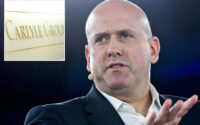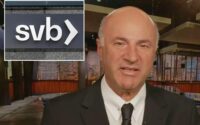Wells Fargo faces US regulatory heat after SVB meltdown: source
Wells Fargo is once again in regulators’ crosshairs – and it can partly thank the screwups at Silicon Valley Bank and Signature Bank of New York for the fresh attention it’s getting, The Post has learned.
On Friday, reps from Wells Fargo are slated to meet with staff from the US Office of the Comptroller of the Currency – or OCC, a key federal regulator for banks which has slapped Wells Fargo with several so-called “matters requiring attention” or MRAs, a federal official told On The Money.
The MRAs are specifically focused on concerns of lackluster internal financial controls and a lack of oversight of stock and bond traders, according to the source.
These MRAs were in part motivated by the bank failures earlier this month — after Silicon Valley Bank and Signature went belly up, regulators have a newfound sense of urgency to ameliorate risk.
“MRAs are a shot across the bow,” Jeffery Smith, a partner at law firm Vorys Sater Seymour and Pease, told On The Money. “It’s a regulator’s way of putting the bank on notice.”
“If MRAs are not addressed, regulators can turn the heat up quickly,” Smith adds.

The insider adds that Wells Fargo – headed by CEO Charles Scharf – has already been briefed on the MRAs but will receive them officially on Friday.
“Wells Fargo is the problem child of the banking family,” the source told On The Money. “And they’re misbehaving yet again.”
The OCC declined to comment. Wells Fargo didn’t respond to a request for comment.
Wells is still operating under nine consent orders that manage everything from how large they can grow their asset management business to stringent risk management protocols the OCC has imposed.
In December, Consumer Financial Protection Bureau Director Rohit Chopra announced a $3.7 billion settlement with Wells over abuses related to mortgages, auto loans, and overdraft fees.
“While today’s order addresses a number of consumer abuses, it should not be read as a sign that Wells Fargo has moved past its longstanding problems or that the CFPB’s work here is done,” Chopra said.
In recent years, the bank has struggled to move past longstanding regulatory issues — namely a scandal revealed in 2016 that showed sales people were opening fake customer accounts in order meet unrealistic sales goals.


